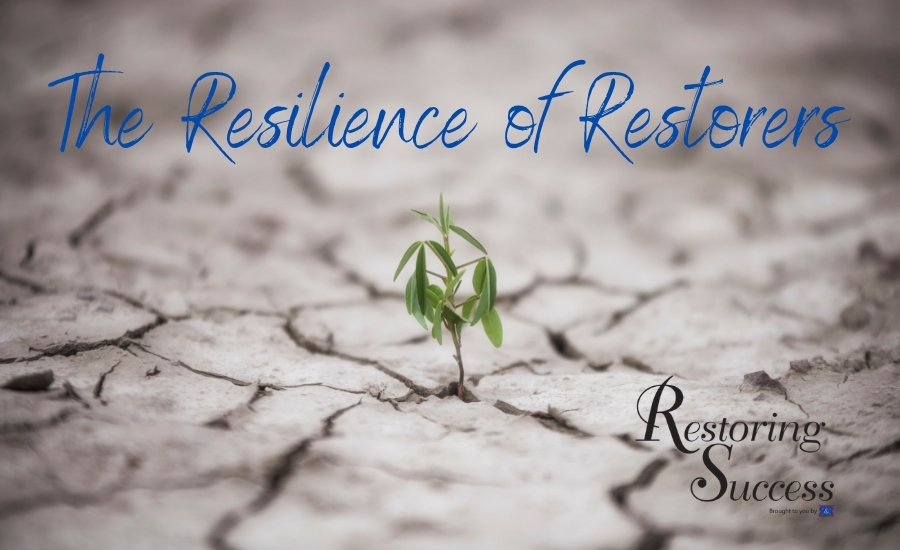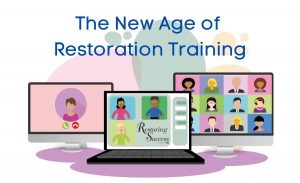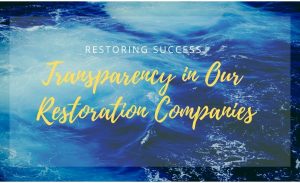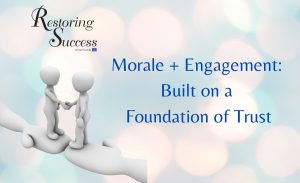 Restoring Success
Restoring Success
It may be predictable, but there is something about a new year that inspires goal setting, resolutions and fresh visions. I have a personal list of things I plan to do to further develop myself in different ways: improving my effectiveness, efficiency and being more organized to name just a few.
The story of Santa, a toilet and a wrong phone number was told in “He’s Making a List” and emphasized the importance of “checking your work” with some tips for success.
My passion for “checking your work” on an individual and company level comes from the consequences I have observed, and experiences I have had, when this discipline is lacking. The concept applies to both our individual work habits and our company’s operational approach. We all make mistakes and even our best efforts may lead to errors.
We recently had a piece go out with a misspelled word. It was checked at least five times and our director of training operations proofs by reading things backwards to avoid missing a misspelled word. As a team, we missed it; it happens. Next, we examined the matter and developed our approach to checking. The program where the word resided was lacking editing tools; going forward, we will spell check in a different program with better editing capabilities.
Why such a fuss over one word? It is a reflection on our attention to detail. We are trainers and believe in setting an example in all we do. Is it possible that the 100 people who saw this error will think less of us? In the years of observing the fallout of not “checking your work” and being a designated checker, there seems to be a pattern of two possibilities: 1) gaining an understanding of how something could have been missed, versus 2) what seems to be a lack of care.
If you are still searching for a personal or companywide new year initiative, consider “checking your work.” Making progress on this can bring about great rewards. It is a very specific behavior of people who are highly conscientious, a trait consistently tied to positive performance. It is something that applies to all in the organization and can directly impact the credibility, effectiveness, efficiency and quality of service to others.
In addition to some of the tips offered in “He’s Making a List,” the following are considerations for the “check your work” initiatives in your organization:
- Check your own work: It starts with ourselves. Whether rereading an email or examining our craftsmanship, we should establish habits to check our work, even if someone else will be reviewing it. Identify it as an important practice in our day-to-day work and coach those who may need to improve.
- Provide training: Include steps that address “checking your work” during training. Do not assume. At Restoration Technical Institute, we incorporate this as a step in our training curriculum.
- Measure and document outcomes: Whether in a standard of care, best practice or standard operating procedure, having a formalized process for certain types of work that includes a defined inspection and/or testing with supporting documentation of the outcome will give protection, as well as add to the credibility of the services delivered.
- Be open to constructive feedback: It is important that when we check each other’s work and mistakes are made, identified and corrected, the spirit is positive. Avoid a potential debacle and treat it as an opportunity to do something better in the future.
- Find a buddy: It is great to have buddies in the company to “check” everything from an estimate to a drywall job when you need fresh eyes.
- Set clearly defined company expectations: It is difficult to check certain types of work without a clearly defined and communicated expectation. These expectations can be converted into checklists and quality control documents.
- Establish clear assignment of responsibility: As a company, employ “checking” as a responsibility of a designated individual. For example, the “lead” on the job might be held responsible for checking the job site before leaving. Or, the marketing manager could be assigned the responsibility to check a mass email before it is distributed.
- Formalized quality control processes and forms: There are certain tasks and/or job types that are suited for a formal quality control process with established control points. This provides consistency and is particularly helpful when there are many variables and/or details. Forms also provide documentation.
The Restoration Technical Institute is offering free access, through the end of January 2022, to our Audits, Inspections & Assessing course, designed to provide ideas and inspiration regarding inspecting, measuring outcomes and tools to help.
May “checking your work” bring you, the team and your company much Restoring Success.












